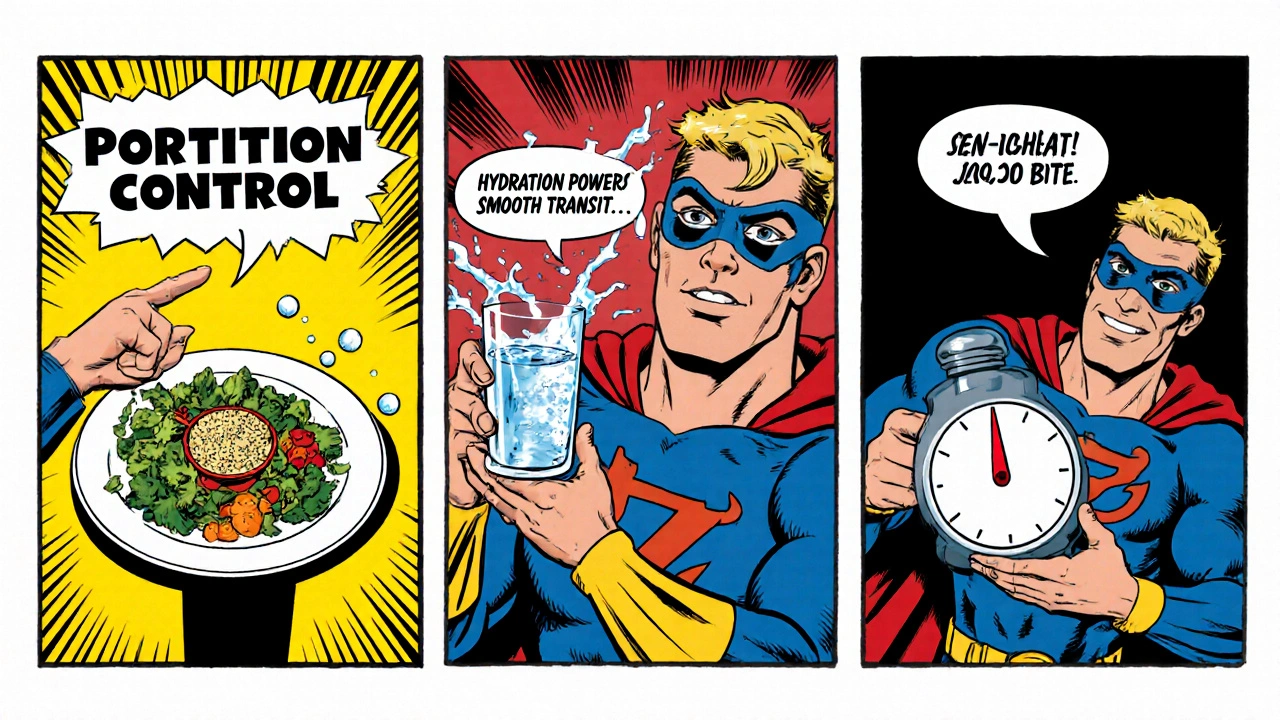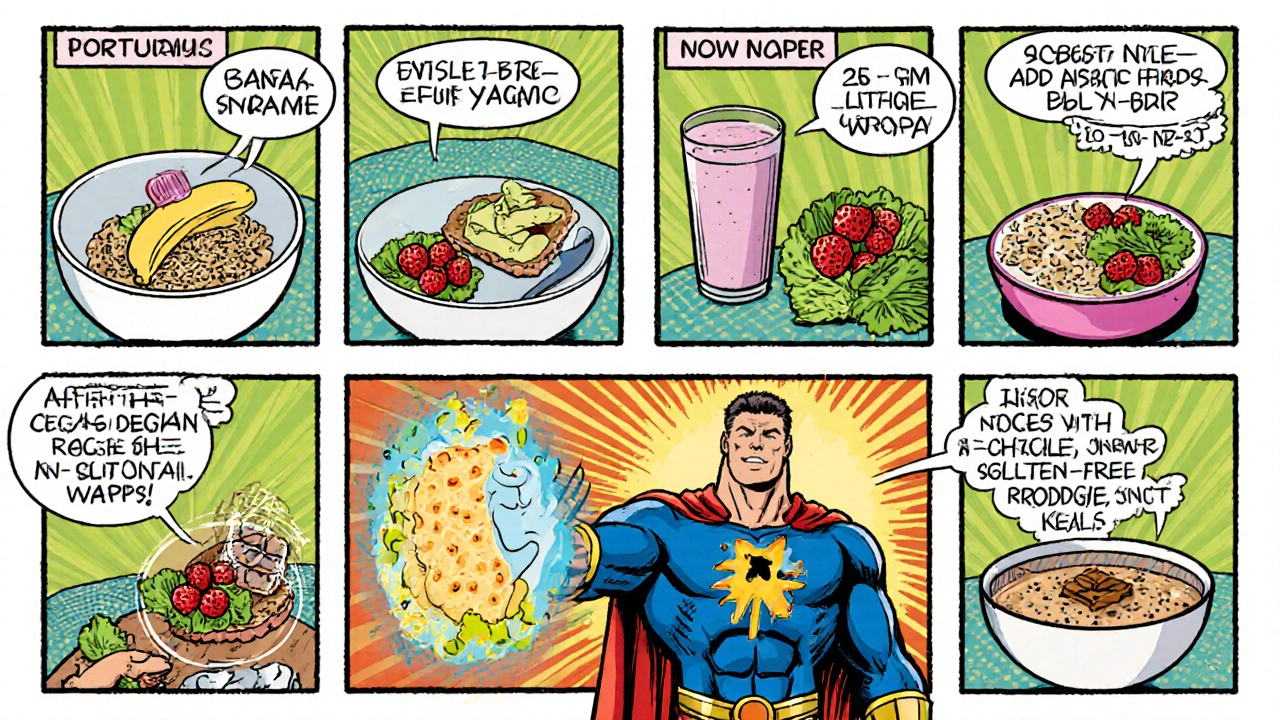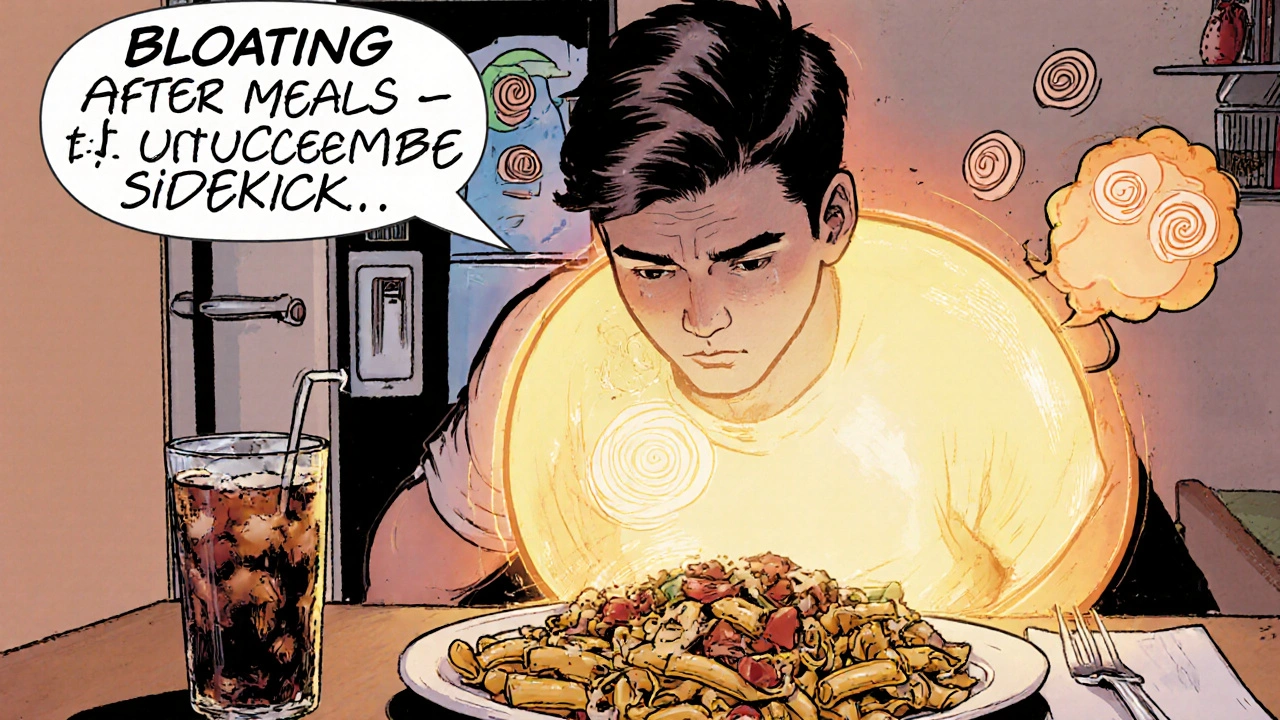Low-FODMAP Food Checker
Check if a food is bloating-friendly
Enter a food name to see if it's high or low in FODMAPs. FODMAPs are short-chain carbohydrates that ferment in the gut and can cause bloating.
Enter a food name to get results
How FODMAPs Affect You
FODMAPs are fermentable short-chain carbohydrates that can cause gas, bloating, and discomfort in sensitive individuals. The Low-FODMAP diet eliminates these foods for 4 weeks, then reintroduces them one group at a time to identify triggers.
When Bloating after meals is that uncomfortable, tight feeling in your stomach that shows up a few minutes or hours after you eat, it’s more than just a minor annoyance. It can signal that the foods you choose, the way you eat, or even your overall hydration level aren’t aligning with your digestive system.
Why diet matters for bloating
Food is the fuel that powers digestion, but not every fuel burns cleanly. Certain carbs, excess sodium, or large portions can create extra gas, draw water into the intestines, or slow transit, all of which lead to that balloon‑like sensation. Adjusting what you put on the plate can dramatically cut down the frequency and severity of bloating.
Identify your personal triggers
Before you pick a diet to prevent bloating, spend a week tracking what you eat and how you feel. Use a simple notebook or a phone app and note:
- Meal time and size
- Specific foods (especially beans, cruciferous veggies, dairy, carbonated drinks)
- How quickly you felt bloated and how long it lasted
- Any non‑food factors (stress, exercise, sleep)
Patterns will emerge - maybe you react strongly to onions, or perhaps a salty snack is the culprit. Those clues steer you toward the right dietary approach.
Core dietary pillars that reduce bloating
Four basic habits work for most people, regardless of the specific plan you follow:
- Portion control: Overeating stretches the stomach and forces digestion to work harder, increasing gas production.
- Water intake: Adequate hydration helps move fiber through the gut and prevents constipation‑related bloating.
- Mindful chewing: Chewing slowly reduces swallowed air and gives enzymes a better chance to start breaking down carbs.
- Sodium moderation: Too much salt pulls water into the intestines, creating a feeling of fullness.
Low‑FODMAP diet: A focused elimination
The low‑FODMAP diet is designed for people who react to short‑chain carbs that ferment quickly. FODMAP stands for Fermentable Oligosaccharides, Disaccharides, Monosaccharides And Polyols. Typical high‑FODMAP foods include:
- Wheat and rye breads
- Legumes (beans, lentils)
- Onions, garlic, and cauliflower
- Apples, pears, and mangoes
- Honey and high‑fructose corn syrup
During a 4‑week trial, you remove all high‑FODMAP items, then gradually re‑introduce them one group at a time. If bloating returns when you add a specific group, you know that category is a personal trigger.

Fiber‑rich but gentle approach
Fiber is essential for regular bowel movements, yet some types (especially insoluble fiber) can create excess gas. Aim for soluble fiber, which dissolves in water and ferments more slowly. Good sources include:
- Oats and oat bran
- Chia seeds and flaxseeds (soaked)
- Bananas (ripe)
- Carrots and zucchini
- Legume‑derived protein powders (if tolerated)
Introduce these foods gradually-about a tablespoon per day-while keeping total fiber under 25g per day until your gut adjusts.
Probiotic‑focused foods for a balanced gut
Healthy bacteria help break down carbs that would otherwise ferment into gas. Incorporate probiotic‑rich foods such as:
- Yogurt with live cultures (look for “activeandlive”)
- Kefir, a fermented milk drink
- Sauerkraut, kimchi, and pickles (unpasteurized)
- Miso soup (low‑salt versions)
- Tempeh, especially when cooked lightly
If dairy triggers bloating, choose non‑dairy probiotic drinks made from coconut or almond bases, but verify they contain live cultures.
What to avoid: common bloating offenders
Beyond the specific diet categories, a handful of items routinely cause trouble:
- Carbonated drinks: The bubbles are literally trapped gas.
- Artificial sweeteners (sorbitol, mannitol) that ferment in the colon.
- Chewing gum and drinking through a straw - both increase swallowed air.
- Heavy, greasy meals that slow stomach emptying.

Practical checklist before every meal
- Did I limit portion size to 1‑2 cups of cooked carbs?
- Am I drinking at least 250ml of water with the meal?
- Have I excluded known high‑FODMAP items for today?
- Did I include a source of soluble fiber or probiotic?
- Am I chewing slowly (20‑30 chews per bite)?
Checking these boxes cuts the odds of bloating in half without a major overhaul.
Sample seven‑day meal plan (low‑FODMAP friendly)
- Day1: Oatmeal with sliced banana, a handful of blueberries, and a dollop of lactose‑free yogurt. Grilled chicken breast, quinoa, sautéed zucchini, and a drizzle of olive oil.
- Day2: Smoothie with kefir, spinach, kiwi, and chia seeds. Baked salmon, baked sweet potato (moderate portion), and steamed carrots.
- Day3: Rice cakes topped with peanut butter and sliced strawberries. Stir‑fried shrimp, brown rice, and bok choy (low‑FODMAP veg).
- Day4: Scrambled eggs with chives, a side of gluten‑free toast, and an orange. Turkey lettuce wraps with cucumber, grated carrot, and a light miso dressing.
- Day5: Lactose‑free Greek yogurt with raspberries and a sprinkle of flaxseed. Grilled pork tenderloin, polenta, and roasted pumpkin.
- Day6: Smoothie bowl with coconut kefir, mango (small portion), and pumpkin seeds. Baked cod, millet, and sautéed green beans.
- Day7: Gluten‑free porridge with maple syrup and toasted almond slivers. Chicken stir‑fry with bell peppers, carrots, and ginger.
Feel free to swap proteins or veggies as long as they stay within low‑FODMAP limits and you keep the fiber‑to‑protein balance steady.
Troubleshooting common issues
- Still bloated after 2 weeks? Re‑evaluate portion sizes - even low‑FODMAP foods cause gas if eaten in large amounts.
- Constipation appears? Increase water intake and add a small teaspoon of ground flaxseed to meals.
- Sudden cramps after dairy? Switch to lactose‑free or plant‑based probiotic options.
- Stress‑related swelling? Incorporate short breathing exercises before meals; the gut‑brain axis is real.
Adjustments are normal; the goal is a sustainable routine, not a strict diet that you abandon after a month.
| Diet | Main Focus | Key Foods to Include | Typical Foods to Limit | Pros | Cons |
|---|---|---|---|---|---|
| Low‑FODMAP | Eliminate fermentable short‑chain carbs | Rice, quinoa, firm tofu, carrots, berries | Garlic, onions, wheat, beans, certain fruits | Fast symptom relief for IBS‑type bloating | Restrictive, requires re‑introduction phase |
| High‑Soluble‑Fiber | Provide gentle bulking without excess gas | Oats, chia, flax, bananas, carrots | Excess insoluble fiber (whole wheat bran) | Improves regularity, easy to follow | May need weeks to notice change |
| Probiotic‑Rich | Balance gut microbiome | Yogurt, kefir, kimchi, miso, tempeh | High‑sugar fermented drinks, pasteurized versions | Supports overall digestion, immune health | Effect varies by individual strains |
Frequently Asked Questions
Can I eat fruit if I’m on a low‑FODMAP diet?
Yes, but stick to low‑FODMAP choices such as strawberries, kiwi, and a small portion of banana. Larger servings can push the fruit into the high‑FODMAP range.
How much water should I drink to help reduce bloating?
Aim for at least 2liters (about 8 cups) spread throughout the day. Drinking a glass of water 30minutes before meals also helps the stomach process food more efficiently.
Is chewing gum really a problem?
It can be. Chewing gum introduces extra air that gets trapped in the gut, leading to gas and a bloated feeling. If you need fresh breath, opt for a mint lozenge that doesn’t require chewing.
Should I avoid all dairy to stop bloating?
Not necessarily. Some people are sensitive to lactose, while others react to the protein casein. Try lactose‑free dairy or fermented options like kefir, which often are easier on digestion.
Can exercise help with post‑meal bloating?
A gentle walk (10‑15minutes) after eating stimulates peristalsis, moving food through the intestines and reducing gas buildup. Intense workouts right after a big meal can have the opposite effect.


Post A Comment